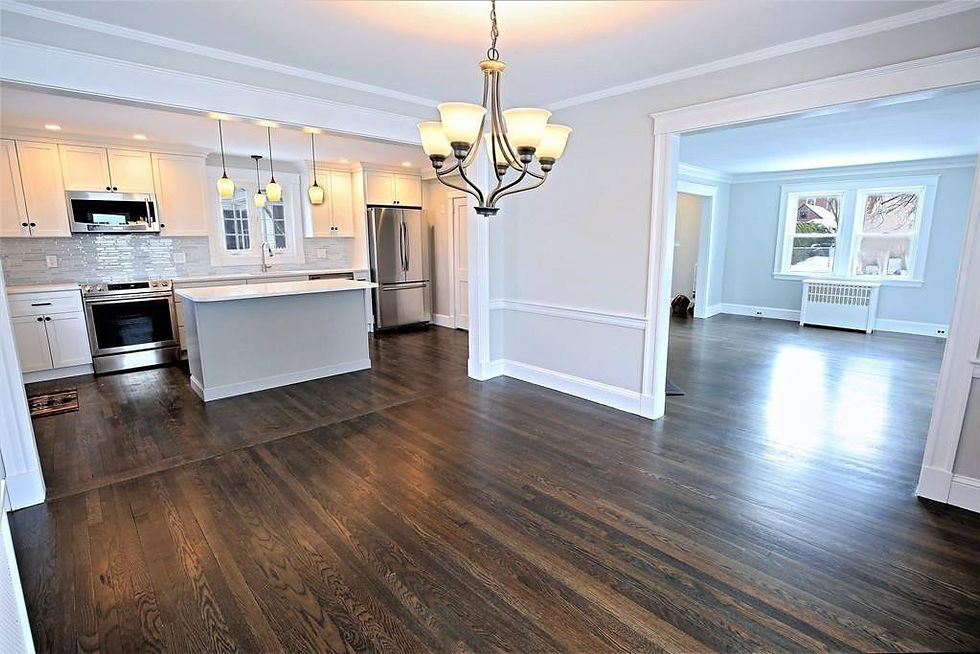SHOULD I CHOOSE PRE-FINISHED (FACTORY FINISHED) OR SITE FINISHED HARDWOOD FLOORING - BY JANELLE R.
- Thang Lam

- Sep 25, 2019
- 2 min read
Updated: Oct 11, 2019

If you are looking to install solid hardwood flooring, the first question that often comes up is whether or not to install pre-finished hardwood flooring (meaning the stain and/or protective polyurethane coatings are done at the factory) or to have the flooring contractor install unfinished hardwood flooring planks and then sand (and stain if required) and apply the protective polyurethane finish on site at your house. TLC Custom Design frequently installs both, and we a lot of experience helping clients pick the best option for their design goals and budget.
The main advantage of installing pre-finished solid hardwood is that as soon as it is installed, you can walk on it/move in and otherwise use the room. If you are under severe time constraints, this might be the best option as you do not have to wait for the floor to dry and cure.
Another advantage of pre-finished is that it is more durable as the factory can install many more layers of protective polyurethane (up to 10) at the factory that just isn't possible with site finished- typically only 3.
A disadvantage of pre-finished is that if a board does become damaged, it is much harder to sand down and match the factory finished floor- you'll most likely need to cut out the damaged board and weave in new factory finished boards to repair the damage.
A frequent misnomer regarding pre-finished hardwood flooring is that they have unsightly beveled edges between the planks that cheapens the look of the floor once installed. The beveled edge is a 45 degree cut on the side of the floorboard that creates a little v when installed next to another plank with this bevel. Pre-finished wood flooring manufacturers use this bevel to hide the slightly uneven height of adjacent boards. With a solid hardwood flooring installation that is finished on site, the flooring contractor can sand the boards so they are all uniform prior to applying the finish, so you can have a square cut board installed right next to another square cut board and there will not be changes in board height once they are sanded and refinished.
Since the entire point of installing pre-finished hardwood flooring is to avoid the sanding and finishing steps once the boards are installed, there is no other way to mask floorboard height unevenness other than to include some type of bevel.
Prefinished hardwood flooring manufacturers have actually come a long way in minimizing this beveled edge and a number of manufacturers produce higher end lines and options that utilize a micro-bevel. This is basically a beveled edge so small that it goes virtually unnoticed after installation is complete. We always recommend installing this type of pre-finished flooring if it makes sense for the client to install a prefinished floor as the end result looks better and are much easier to clean.
Frequently, to accommodate pre-finished hardwood flooring in older homes, we will need to repair the subflooring, or if it makes sense, install plywood on top of the old subfloor to create an even installation surface for the pre-finished hardwood.
If your subflooring is damaged or uneven, make sure your contractor is addressing this before installing the new pre-finished flooring.




Comments